
Pench National Park is located in the magical land of Madhya Pradesh which falls in the districts of Seoni and Chhindwara bordering Maharashtra. Rose from the status of sanctuary to national park, it snuggled in the lower southern region guarded with the hilly topography and with assorted teak forested area widely found in this region, it reaches Satpura hills which are named after the River Pench, flowing through the centre park from North to South direction and is a lifeline of Pench Tigers. Being one of the most popular wildlife sanctuaries in India which attracts flocks of wildlife enthusiasts every year, it possesses a rich biodiversity along with the buffer area and offers the visitor to splurge in one of the splendid adventures in India.
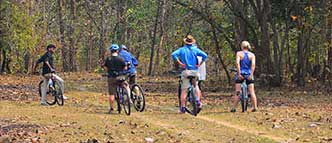
Another attraction is the cycling excursion from Rukhad sanctuary which is situated in the buffer zone of Pench National Park. It is a thrilling adventure of spotting wildlife and enjoying the natural beauty. Rukhad was one of the most popular forests for sighting wild animals. Being a part of the famous Kanha-Pench Tiger Corridor, Rukhad, though not a national park, still boasts of magnificent teak and bamboo forests and has a large number of gaurs, tigers, leopards, bears and other animals.The cycling expedition starts at around 8 A.M. and covers a distance of 22 kms finishing at Sakata Forest Rest House.
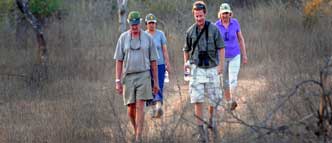
RuniJhuni walking trail inside the Pench National Park, from Karmajhiri gate, is a 3-4 kms nature trail.It provides a perfect opportunity to tourists to experience nature and wildlife from very close quarters. Accompanied by experienced naturalists, this walking trail ensures a detailed understanding of nature and the various flora and fauna. Alarm calls, fresh animal tracks, including tiger pug marks, can be sighted during the jungle walk. Langurs, deers, wild boars, jungle fowls, a variety of birds are the main attractions of this walking trail.
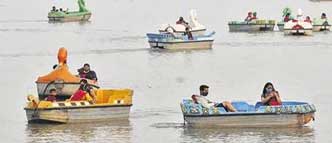
The Kamthikhairy Dam or the Pench Dam is an earth-fill dam on the Pench River. It is situated inside the Pench National Park and most of the wildlife is found around this water body as the animals come near the dam to drink water. In the summer season, the Pench River dries out leaving behind small pools of water that are locally known as ‘doh’ or ‘khassa’. The Pench Reservoir which is at the center of this park is the only major water source here. Tourists have the opportunity to view several species of waterbirds while enjoying a ride in their pedal-boats, row-boats and motor-boats. This place is a must-visit place for every bird lover who must not forget to carry their binoculars for a memorable experience.
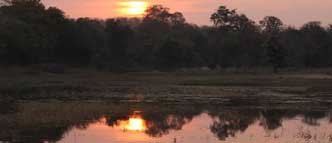
Kohka Lake is one of the less explored beautiful landmarks near the Pench National Park. From Turia or Kohka, one can easily reach to this lake via cycle, jeep or even by foot. Having a look at the beautiful sunset and a view of the lush green fields the lake is home to several species of colorful birds. Blended with nature it gives you an opportunity to explore the great outdoors at popular Kokha Lake during your vacation in Avarghani Pench. Please add it to your itinerary and make some time to see the monuments while you are in the area. It is really a heartfelt place to be discovered once while visiting Pench National Park.
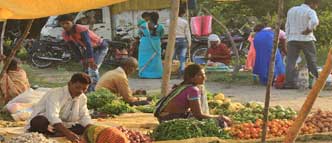
Tourists can go on a shopping spree by taking a guided tour by foot or a bicycle ride to the local villages and weekly haats (bazaars). Bazaars are organized on various days at different locations. Beautifully designed handicrafts and local products can be purchased. Sellers oblige the tourists with a cup of piping hot tea. These Haats are away from the hustle and bustle of the city the local villages of Pench Such as Vijaypani, Badalpar, Khamba and Belpath and weekly Haat bazaars offer unique experiences to the tourists which can never be found anywhere else for sure. Village tour and Haat exploration is one of the must-do tourist activities.
Pench National Park has a rich and vivid historical past. It finds mention in the 16th-century document (Ain-i-Akbari) written by Abu’l-Fazl ibn Mubarak. “The Jungle Book,” an immensely popular and much-loved wildlife novel by Rudyard Kipling, is based on Pench. The story of Mowgli was inspired by a real story prevalent in the region. In 1831, a child who had grown up with wolves in Satbavadi village near Seoni was arrested. This led Sir William Henry Sliman to write “An account of wolves’ nurturing children in their dens,” which probably led to the inception of “The Jungle Book.” All your beloved characters from the book can be seen alive in the vast expanse of Pench national park.
Located in the heart of India, Pench national park covers the Chhindwara and Seoni districts of M.P., with some parts falling in the neighboring state, Maharashtra. The tribal forest area was initially declared a sanctuary, and a decade later, it was acknowledged as a national park. Since the tiger population in the forest was in good numbers, itbecame a part of the Project Tiger and has been known as Pench tiger reserve since then. Covering approximately 758 sq. km., the Pench national park comprises a core Tiger reserve zone covering around 293 sq. km. and 118 sq. km. Mowgli Pench wildlife sanctuary. The Pench river divides the park into roughly equal eastern and western zones. The sanctuary is home to various wild animals, including several endangered species. It has around 10 villages, 1 within and 9 bordering the park.
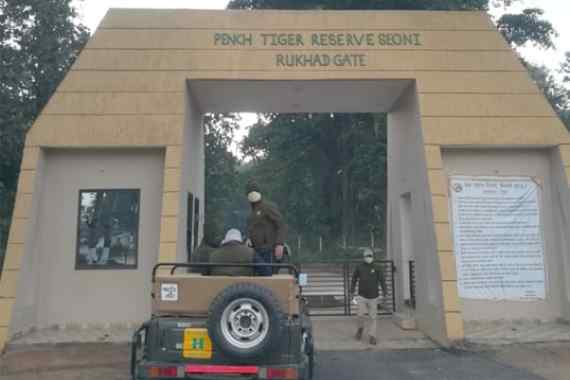
Central India boasts of the Pench tiger reserve that lies nestled among the serene mountains of the Satpura range. Though not as famous as Bandhavgarh or Kanha, the other national parks in M.P., Pench tiger reserve has a loyal fan following. The Pench river that flows in the region has the Meghdoot dam built over it at Totladoh. This dam is responsible for the creation of 72 sq. km. water body, shared by the two bordering states, M.P. (54 sq. km.) and Maharashtra (18 sq. km.).
Royal Bengal Tigers are the major attractions of the Pench tiger reserve. As per the last census report, the tiger population in reserve ranges between 53 to 75, with around 80 more tigers dwelling in the reserve area. So, it is no wonder that the enchanting and engaging tale of Mowgli and his adversary Sher Khan was inspired by this magnificent forest. Thanks to the forest officials' excellent and consistent conservation efforts, Pench has earned the reputation of one of the well-managed parks in M.P. With BBC’s documentary “Tiger - Spy in The Jungle” on the Pench tiger reserve, the reserve gained more popularity. Captain J. Forsyth, a naturalist, also wrote extensively about the Satpura region's nature reserves, attracting the attention of several wildlife enthusiasts.
The core area of the tiger reserve is spread across 411 sq. km. Along with a buffer zone comprising more than 760 sq. km., the total forest area covered by the Pench tiger reserve is around 1200 sq. km. The region boasts of a large variety of flora and fauna. You can experience different forest types (South Indian tropical moist deciduous, Southern tropical dry deciduous, and Southern dry mixed deciduous) while traversing through the Pench tiger reserve. Around 1200 species of plants, including climbers, shrubs, and trees (Mahua, Teak, Amaltas, Tendu, Bija, Khair, Palas, etc.) have been documented in the region many of which are rare and endangered. Apart from this, many plants of ethnobotanical importance are also found in the forests of the Pench tiger reserve.
The region is also rich in fauna, with various animals, birds, insects, and reptiles seen in the area. Large herds of wild boar, chital, nilgai, sambhar, and Indian bison are often spotted. The predators are dominated by the Royal Bengal Tiger, leopard, wolves, and wild dogs. Other mammalian species spotted in the national park include sloth bear, spotted deer, jackal, fox, barking deer, palm civet, jungle cat, porcupine, hyena, small Indian civet, langur, etc. Apart from these animals, more than 105 species of butterflies, moths, and insects can be seen here. The forests are home to several residents and migratory birds (in winters), including Osprey, White-eyed Buzzard, Indian pitta, Malabar pied hornbill, grey-headed fishing eagle, vultures, etc. Ornithologists can have a wonderful time spotting the more than 300 species of bird seen in the region during the winter months. Around 50 species of fishes, 33 species of reptiles, including pythons, monitor lizards, crocodiles, turtles, cobra, viper, and 13 amphibian species are also seen here.

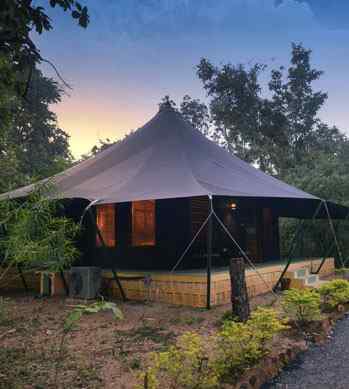

While most of the Pench tiger reserve is situated in M.P., some parts of the national park are accessible from neighboring Maharashtra. Some of the safari gates that form a part of the buffer zone lie in Maharashtra and are accessible throughout the year. The rich flora and fauna of the region attract numerous visitors to the national park who can experience nature at its best here. The national park has been well conserved and maintained by forest officials, leading to several accolades. If you wish to experience the world of Mowgli, come alive in front of your eyes, visiting the Pench national park must be on your bucket list.
The dense forest cover of Pench makes it quite difficult to spot wild animals. However, the presence of skilled and experienced guides can work wonders for your luck. Moreover, Pench is visited by several tourists throughout the open season. Thus, if you make your bookings in advance, you might get a chance to stay in the forest rest house, which is an unforgettable experience. Furthermore, with several affordable and luxury hotels and resorts available near the different gates of Pench, you are guaranteed a comfortable stay.
The region of Pench is home to the Gond tribe, which is known to worship the forest area and its inhabitants. Pench is home to many predators and prey, all of which can be sighted by visitors provided they have luck and patience. Apart from this, many varieties of birds attract flocks of tourists from across the country. The Pench national park remains open throughout the year, except for the monsoon season. However, the buffer zone remains open during this time too. Additionally, Holi and Diwali are two occasions when the park remains closed. Furthermore, the afternoon safari is not available on all Wednesdays. Thus, it is important to make your bookings accordingly.
Safari in Pench is available during the summer and winter seasons. However, due to heavy rainfall, the forests remain closed in the monsoon season. The Pench national park is divided into several zones, six of which fall in M.P. and the remaining in Maharashtra.
The Pench National Park is open for tourists from 15th October to 30th June. However, the best time to visit the national park is from November to March.
The Pench National Park is divided into six tourism zones (Touria, Jhamtara zone, Karmajhiri zone, Telia, Rukhad, Khawasa) which then take on different routes. Amongst the three, the most popular zone for tiger sighting is the Tala zone.
The Pench National Park boasts of around 60-70 tigers in its forests. Depending on your luck, you might be able to spot one during your safari.
Pench National Park was the hunting ground of the erstwhile royal family of Rewa. The Maharaja of the princely state used to hunt tigers here. The national park is well known for the high density of tigers in its forests.
The Pench National Park is sprawl over huge area and it has many tourists attractions near by to visit and explore such as Potters village, Khokha lake and Khindsi Lake.
The Pench National Park is a delight for birdwatchers as several beautiful species of birds can be spotted in the forests of the park. The most common birds spotted in this Madhya Pradesh national park include the Indian grey hornbill, green-headed barbet, Alexandrine parakeet, orange-headed thrush, common myna, etc.
Apart from the national animal, the Royal Bengal Tiger, the other animals that can be spotted by tourists in the Pench National Park include leopards, sambar, nilgai, barking deer, gaur, wild boar, chinkara, chausingha, etc.
The Royal Bengal Tiger is an elusive animal and spotting it is not easy. however, if you plan your trip to Pench National Park in the months of April-June, your chances of spotting the tiger are high. This is because extreme heat forces the wild animals to look for waterholes to quench their thirst and beat the heat. However, you should be prepared to bear the heatwave and high temperatures. Alternatively, you can also try your luck during the winter months of December to March.
Spotting a tiger in its natural surroundings is a matter of chance. If you are a wildlife enthusiast and nature lover, you can plan a 3-5 dayPench National Park trip. This provides you with ample time to explore the surrounding attractions of the region. Moreover, you also get several chances of taking the safari to increase your odds.
Pench National Park can be reached by road, train, and air. The nearest domestic airport is at Jabalpur (160 km) and Khajuraho (225 km). Well-connected roads and the availability of public and private transport make it easy for people to reach the national park from these cities. The nearest railway station is Umaria and Katni which are respectively 22 km and 100 km from the Pench National Park. Travelers can hire cabs to reach the destination from any of the major cities of Madhya Pradesh.